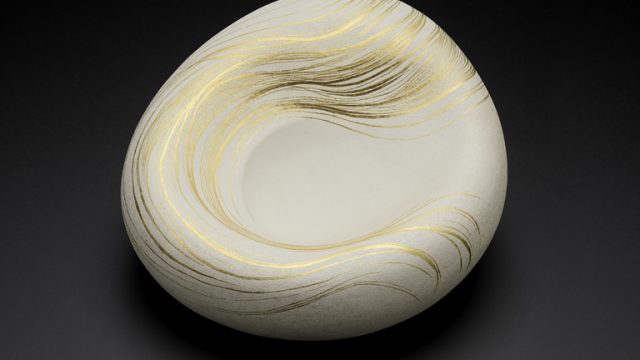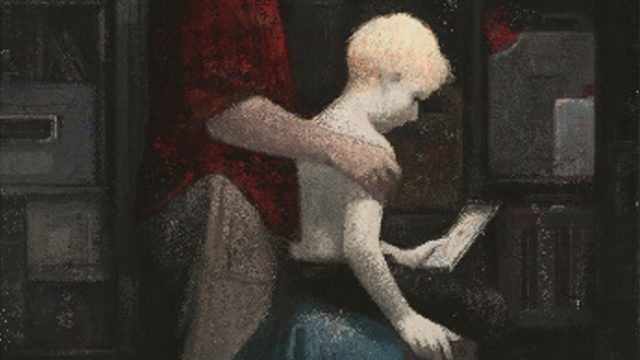In celebration of the 25th anniversary of the founding of the National Video Archive of Performance, Jill Evans looks back at how the archive has developed.
This May, we fêted Margaret Benton, former Director of the Theatre Museum in Covent Garden, for creating the National Video Archive of Performance (NVAP) and pioneering the art of recording performance, an art that has radically changed the way audiences can see British theatre throughout the world.
The 371 recordings in NVAP, part of the Theatre and Performance Collection, are unusual as museum objects, because we have created them ourselves. The catalogue ranges from Shakespeare at Stratford-upon-Avon to Sinbad the Sailor at Stratford East, from Sondheim to Pinter, from Aphra Benn to Caryl Churchill and includes early work of Daniel Radcliffe, Daniel Craig, Benedict Cumberbatch, Helen McRory and Lia Williams, among many, many others.

When Margaret Benton became Director of the Theatre Museum in 1990 she was aware, thanks to her background in television, that the technology now existed to record live performance. She also knew that the Theatre on Film and Tape Archive at the New York Public Library had been doing so for 2 decades. Not only could such recordings breathe life into exhibitions at the Museum and provide researchers with an audio-visual memory trace of a performance to complement the traditional objects in the archive but they could revolutionise the teaching of drama as performance rather than as literature, provide an invaluable reference guide for theatre professionals and a detailed, objective account of individual performances for posterity.
It is hard now to believe, given the ubiquity of theatre recordings, how much initial hostility there was. Learned papers were written exploring whether there could be any value in the translation of the ephemeral art of theatre to another, permanent and two-dimensional medium and examining the theory and aesthetics surrounding what was then called ‘performance documentation’. Peter Brook had said, in 1969 ‘A theatre performance is an event for that moment in time, for that audience, in that place, and it’s gone. …. Which is how it should be in theatre’ Arguments raged about how it should be done: should it, for example, be a single camera, seated in the ‘best seat in the house’; should the screen be split in 3 with different views within the one frame?

It was generally agreed that any editing would impose a layer of artistic judgement that might conflict with that of the theatre director or dictate where the viewer was looking on the stage. So once Margaret Benton had negotiated a unique agreement with the Federation of Entertainment Unions in 1992, she was reluctantly persuaded that three separate, continuous shots of the entire performance should be watched on three separate monitors, allowing the viewer to look at whichever view they preferred. This proved totally impractical, as it was impossible to make the three playback machines run in perfect sync, so another method had to be found.
Television in the 90s frequently broadcast live music, opera and ballet so it was decided that the methods used for Outside Broadcasts could be adapted for theatre. Two, three or four cameras could be positioned among the audience and cabled to a van fitted with television recording equipment parked outside the theatre where a director would talk the camera operators through the shots and cut between the cameras, creating a ‘live’ edited recording.
We quickly developed guidelines which we still hold to today: avoidance of the closeups and fast editing loved by television and we continue to preserve an unedited wide shot of the whole stage for viewers who want, for example, to observe lighting changes, exits and entrances and reaction shots.

The Outside Broadcast technique, however, was expensive and cumbersome. As video equipment got smaller, we started experimenting and gradually abandoned the Outside Broadcast process; we have now established a methodology that allows us to make 25 or so recordings a year, covering any form of performance and responding swiftly when we decide to make a recording. Usually using 5 cameras, which we own, each operator has a role to play (generally speaking a wide shot, 2 group shots and 2 cameras cross shooting medium close ups) and the output of the 5 cameras is then edited in post production. A sound recordist with theatre experience is essential as the sound is harder to capture than the image and just as we change nothing about the theatre performance (even if the lighting is sepulchral) so we never ask to put radio mics on the actors. We continue to experiment with new ways to capture performance and recently made our first Virtual Reality recording.
Although the Union agreement negotiated 25 years ago has been relaxed to allow, for example, one minute of each recording to be posted on the V&A website, there can still be no commercial exploitation of the recordings and they can only be viewed on Museum premises. The fundamental purpose of NVAP remains – to create a high quality, faithful and objective recording of a performance to be available today for study and inspiration and as a legacy for tomorrow.

Recordings in the National Video Archive of Performance can be viewed in the reading rooms at Blythe House for more information please visit our website.



